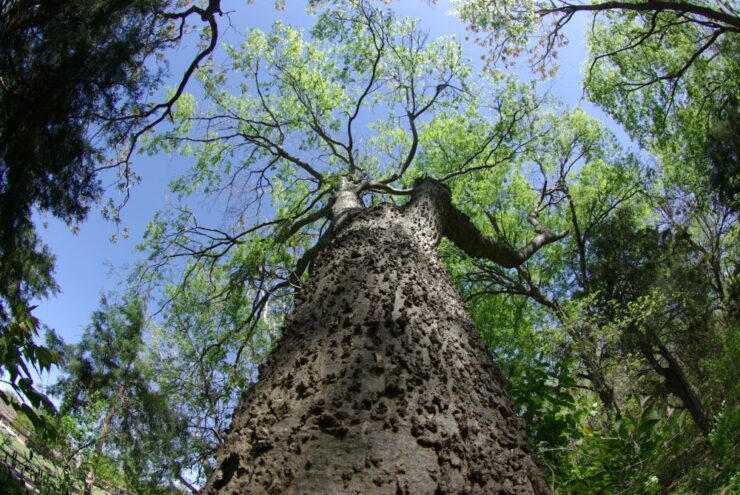Almost identical to hackberry. Fruit is popular with winter birds, especially the cedar waxwing, mockingbird, and robin. Little value for deer.
Sugarberry (Celtis laevigata) is a small to medium-sized tree with alternate, simple, leaves 2 to 5 inches long. Leaves are ovate, with acuminate tips and a cordate, inequilateral base. Leaf margins are serrate and may be somewhat pubescent (hairy) below.
Sugarberry has a fleshy, globose drupe, 1/4 to 3/8 inch in diameter, turning reddish to dark purple when ripe and edible.
The Sugarberry twigs are characteristically zigzaggy with no terminal bud.
Sugarberry have distinct gray or light brown bark, smooth with corky “warts” or ridges. Sugarberry can be distinguished from Hackberry because the fruits are juicier and sweeter, bark is less corky, and leaves are more narrower.


